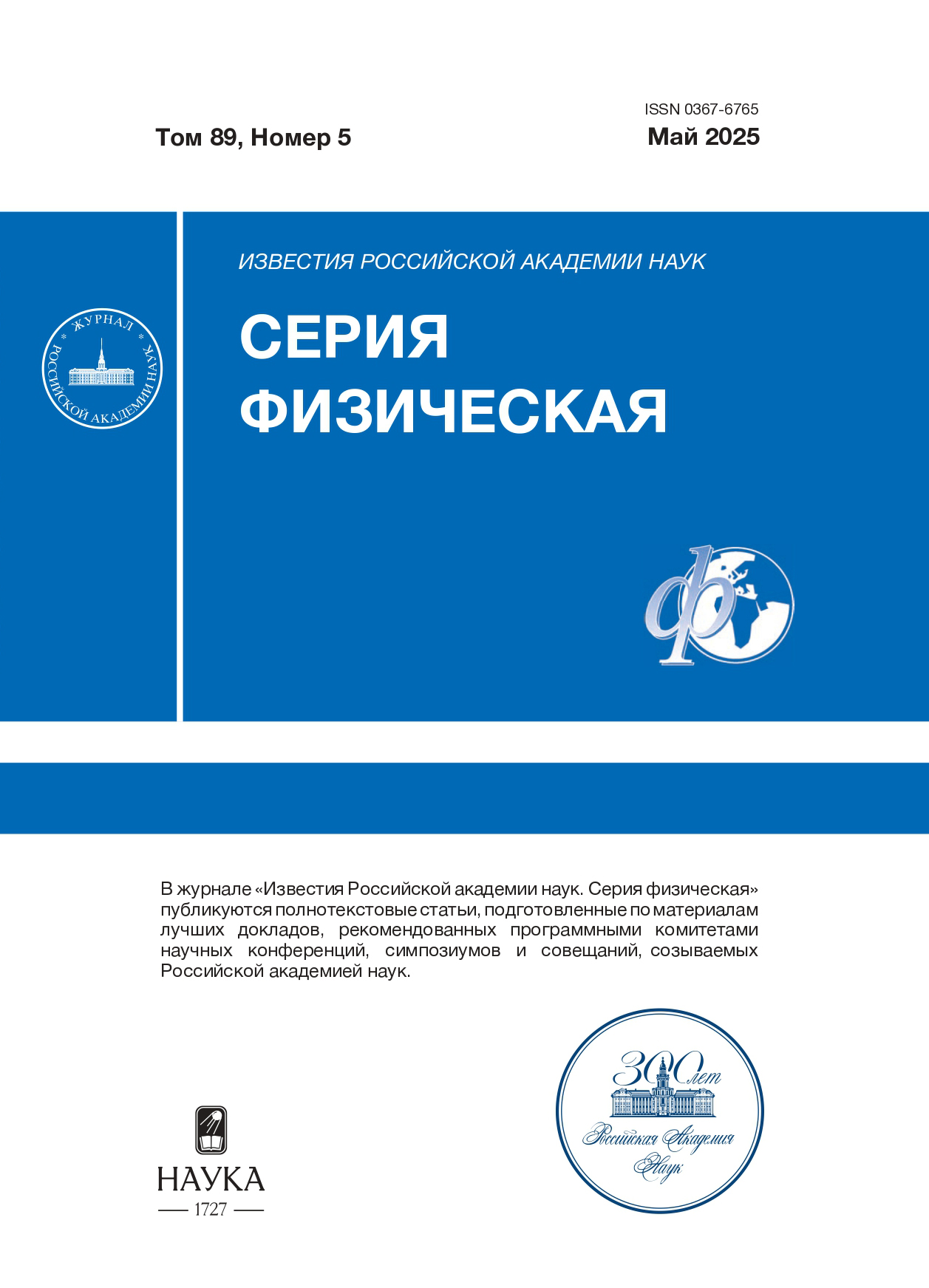Study of time parameters of interplanetary disturbances with magnetic clouds
- Authors: Abunina M.A1, Belov A.V1, Shlyk N.S1, Belov S.M1, Abunin A.A1, Oleneva V.A1, Yanke V.G1
-
Affiliations:
- Pushkov Institute of Terrestrial Magnetism, Ionosphere and Radio Wave Propagation of the Russian Academy of Sciences
- Issue: Vol 89, No 5 (2025)
- Pages: 733-737
- Section: Physics of Auroral Phenomena
- URL: https://jdigitaldiagnostics.com/0367-6765/article/view/691648
- DOI: https://doi.org/10.31857/S0367676525050085
- ID: 691648
Cite item
Abstract
About the authors
M. A Abunina
Pushkov Institute of Terrestrial Magnetism, Ionosphere and Radio Wave Propagation of the Russian Academy of Sciences
Email: abunina@izmiran.ru
Moscow, Russia
A. V Belov
Pushkov Institute of Terrestrial Magnetism, Ionosphere and Radio Wave Propagation of the Russian Academy of SciencesMoscow, Russia
N. S Shlyk
Pushkov Institute of Terrestrial Magnetism, Ionosphere and Radio Wave Propagation of the Russian Academy of SciencesMoscow, Russia
S. M Belov
Pushkov Institute of Terrestrial Magnetism, Ionosphere and Radio Wave Propagation of the Russian Academy of SciencesMoscow, Russia
A. A Abunin
Pushkov Institute of Terrestrial Magnetism, Ionosphere and Radio Wave Propagation of the Russian Academy of SciencesMoscow, Russia
V. A Oleneva
Pushkov Institute of Terrestrial Magnetism, Ionosphere and Radio Wave Propagation of the Russian Academy of SciencesMoscow, Russia
V. G Yanke
Pushkov Institute of Terrestrial Magnetism, Ionosphere and Radio Wave Propagation of the Russian Academy of SciencesMoscow, Russia
References
- Burlaga L., Sittler E., Mariani F., Schwenn R. // J. Geophys. Res. 1981. V. 86. P. 6673.
- Burlaga L.F., Behannon K.W. // Solar Phys. 1982. V. 81. P. 181.
- Klein L., Burlaga L. // J. Geophys. Res. 1982. V. 87. No. A2. P. 613.
- Gosling J.T., Bame S.J., McComas D.J., Phillips J.L. // Geophys. Res. Lett. 1990. V. 17. No. 7. P. 901.
- Badruddin B., Yadav R.S., Yadav N.R. // Solar Phys. 1986. V. 105. No. 2. P. 413.
- Fadaaq M., Badruddin B. // Astrophys. 2021. V. 64. No. 2. P. 210.
- Fadaaq M., Badruddin B. // Astrophys. Space Sci. 2020. V. 366. Art. No. 10.
- Melkumyan A.A., Belov A.V., Abunina M.A. et al. // Month. Notes Royal Astron. Soc. 2022. V. 515. No. 3. P. 4430.
- Melkumyan A.A., Belov A.V., Shlyk N.S. et al. // Month. Notes Royal Astron. Soc. 2023. V. 521. No. 3. P. 4544.
- Мелкумян А.А., Белов А.В., Абунина М.А. и др. // Геомагн. и аэрономия. 2022. Т. 62. № 3. С. 283
- Melkumyan A.A., Belov A.V., Abunina M.A. et al. // Geomagn. Aeron. 2022. V. 62. No. 3. P. 159.
- Абунина М.А., Белов А.В., Шлык Н.С. и др. // Геомагн. и аэрономия. 2024. Т. 64.№1. С. 29
- Abunina M.A., Belov A.V., Shlyk N.S. // Geomagn. Aeron. 2024. V. 64. No. 1. P. 24.
- Matzka J., Stolle C., Yamazaki Y. et al. // Space Weather. 2021. V. 19. No. 5. Art. No. e2020SW002641.
- Белов А.В., Ерошенко Е.А., Янке В.Г. и др. // Геомагн. и аэрономия. 2018. Т. 58. № 3. С. 374
- Belov A.V., Eroshenko E.A., Yanke V.G. et al. // Geomagn. Aeron. 2018. V. 58. No. 3. P. 356.
- Shlyk N.S., Belov A.V., Abunina M.A. et al. // Month. Notes Royal Astron. Soc. 2022. V. 511. No. 4. P. 5897.
- Richardson I.G., Cane H.V. // Solar Phys. 2011. V. 270. P. 609.
- Kumar A., Badruddin B. // Solar Phys. 2014. V. 289. P. 2177.
- Belov A., Abunina A., Abunina M. et al. // Solar Phys. 2015. V. 290. P. 1429.
Supplementary files











